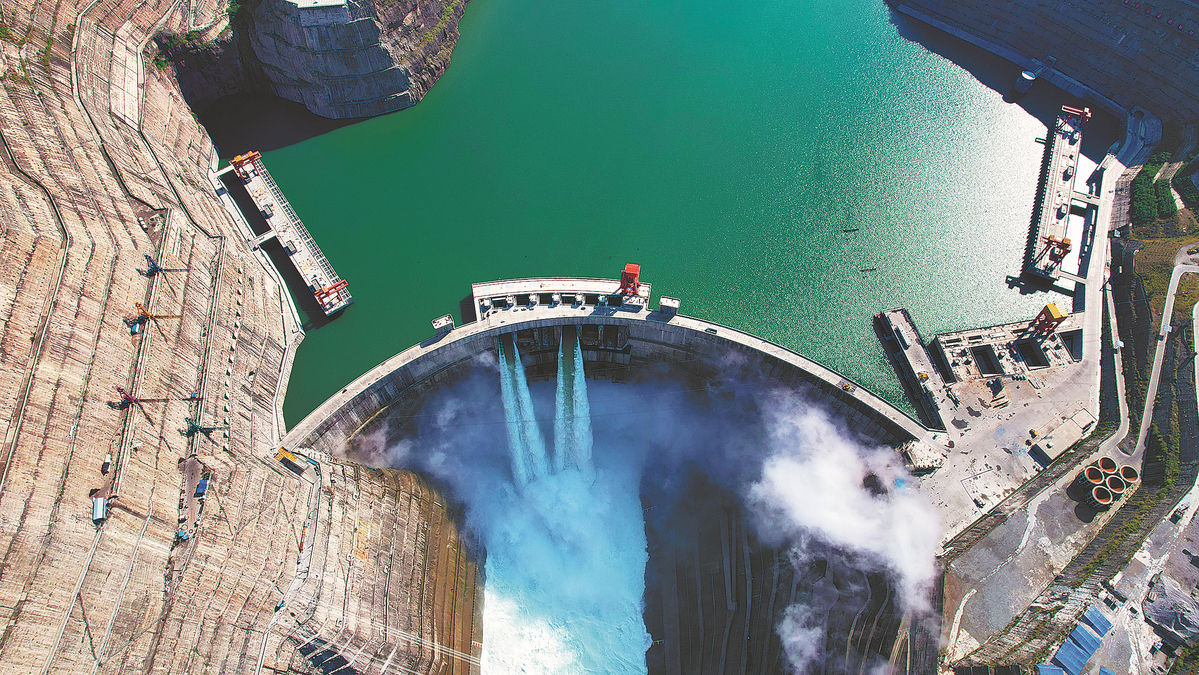Diversifying giant power corridor contributes to green transition goals


China plans to diversify the world's largest clean energy corridor with more solar and wind power projects based on existing hydropower stations, officials said.
The move is expected to further facilitate the country's carbon neutrality goals as it goes full throttle into its green energy transition.
The National Energy Administration plans to build the ability to produce more than 60 million kilowatts of wind power, photovoltaic power and other new energy sources along the Jinsha River, which is the name for the upper section of the Yangtze River.
This would achieve multi-energy complementarity, which is a mix of energy sources that complement each other with comprehensive and integrated development. It would also take advantage of the regulation capacity of the cascade hydropower plants, which can store water to help avoid floods, using the excess water to generate power. Such cascade plants are built one after another along a waterway, which entails additional requirements for optimum operation.
The NEA also vows to further ensure the steady operation of cascade hydropower plants along the Jinsha River to facilitate China's shift in energy structure and the coordinated development of the regional economy in the country.
The powerful, 16-gigawatt Baihetan hydropower plant, which was put into operation and started generating green electricity in December, will serve as a major power source for China's west-to-east power transmission.
Located downstream of the Jinsha River on the border of Yunnan and Sichuan provinces, it has the world's largest installed capacity for a single generating unit and the world's second-largest in terms of overall installed capacity, according to its operator, China Three Gorges Corp.
The Baihetan station also signifies a major breakthrough for China's high-end equipment manufacturing, given that it is equipped with 16 domestically developed hydro-generating units, each with a capacity of 1 million kW, said Lei Mingshan, chairman of the company.
"The full operation of Baihetan is of great significance to China's shift in energy structure, the construction of the Yangtze River Economic Belt and the coordinated development of the regional economy in the country," he said.
The completion of the Baihetan hydropower station marks the completion of the world's largest clean energy corridor, including the Baihetan station and the Wudongde, Xiluodu, Xiangjiaba, Three Gorges, and Gezhouba cascade hydropower stations over trunk streams of the Yangtze River. The six hydropower stations are now equipped with 110 generating units and have a total installed capacity of nearly 71.70 million kW, according to the China Three Gorges Corp.
The six cascade hydropower stations are expected to generate 300 billion kWh annually, which will relieve power shortages in Central and East China, and in Sichuan, Yunnan and Guangdong provinces. It will also support safe and stable operation of the west-to-east power transmission project and power grid.
The construction of the Baihetan-Zhejiang 800-kilovolt ultra-high-voltage direct current power transmission project was also completed in December, which will help send the clean electricity generated in the southwestern province of Sichuan to eastern Zhejiang province through a transmission line stretching 2,121 kilometers, according to the State Grid Corp of China.
China has been working on the construction of large hydroelectric dams, especially in the south-western region, due to its abundant hydropower resources.
Michael F. Rogers, president of the International Commission on Large Dams, said China is expected to lead the world in hydropower innovation in the future as the country's hydropower projects have helped improve people's livelihoods and environmental protection.
Luo Zuoxian, head of intelligence and research at the Sinopec Economics and Development Research Institute, said the cascade hydropower stations, together with the power transmission project that sends electricity from the resource-rich west to energy-consuming regions in the east, will further help southwestern areas to become a key renewable energy center with hydropower as a key player.
Compared with other renewable energy, hydropower is more stable and will play a key role in the new power system in the future, he said.
The China Three Gorges Corp said the clean power generated by the 1,800-km energy corridor could help replace about 90.45 million metric tons of coal or avoid about 248.4 million tons of carbon dioxide emissions annually.




































